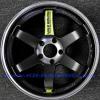Turbine AR, trim, cams and airflow- what does it all mean?
Announcements
-
Similar Content
-
Latest Posts
-
I got a quote to restore a set of Volk racing gtc wheels at a wheel restoration shop which involved repainting the centres fixing some small gutter rash and repolishing them and the quote was $2.5k I ended up getting them sandblasted and powdercoated for $240
-
Has anybody had their wheels refurbished? I reckon it's likely bloody expensive. Even a sand blasting quote for my 17s was 200-300 per wheel! The E39 wheels are basic BMW M Sport (or M Tech at the time.) they have slight rash and some have signs of bad repair in the past on the lips. The main issue is that they've become really off coloured. I think it will be too much as this is definitely (supposed to be) a budget resto. I've been looking at others for sale but they all have some minor damage and colour issues. In the end I think I'll just need to sand blast them myself and do a respray.
-
By PotatoCake · Posted
Trying to figure out which nismo cluster i have. All the ones i see on the internet, the speedo goes up to 320kph and the revs 11k, with the nismo logo being on the rev gauge only. But on my one, the speedo goes up to 300 and says nismo, while the revs only go upto 10k and no nismo logo Dunno how to embed pics into a post so ill attach pic of my cluster and generic google search for reference Is what i have genuine? -
how does one remove the needles from the gauge cluster on a R34 GTT?
-







Recommended Posts
Create an account or sign in to comment
You need to be a member in order to leave a comment
Create an account
Sign up for a new account in our community. It's easy!
Register a new accountSign in
Already have an account? Sign in here.
Sign In Now